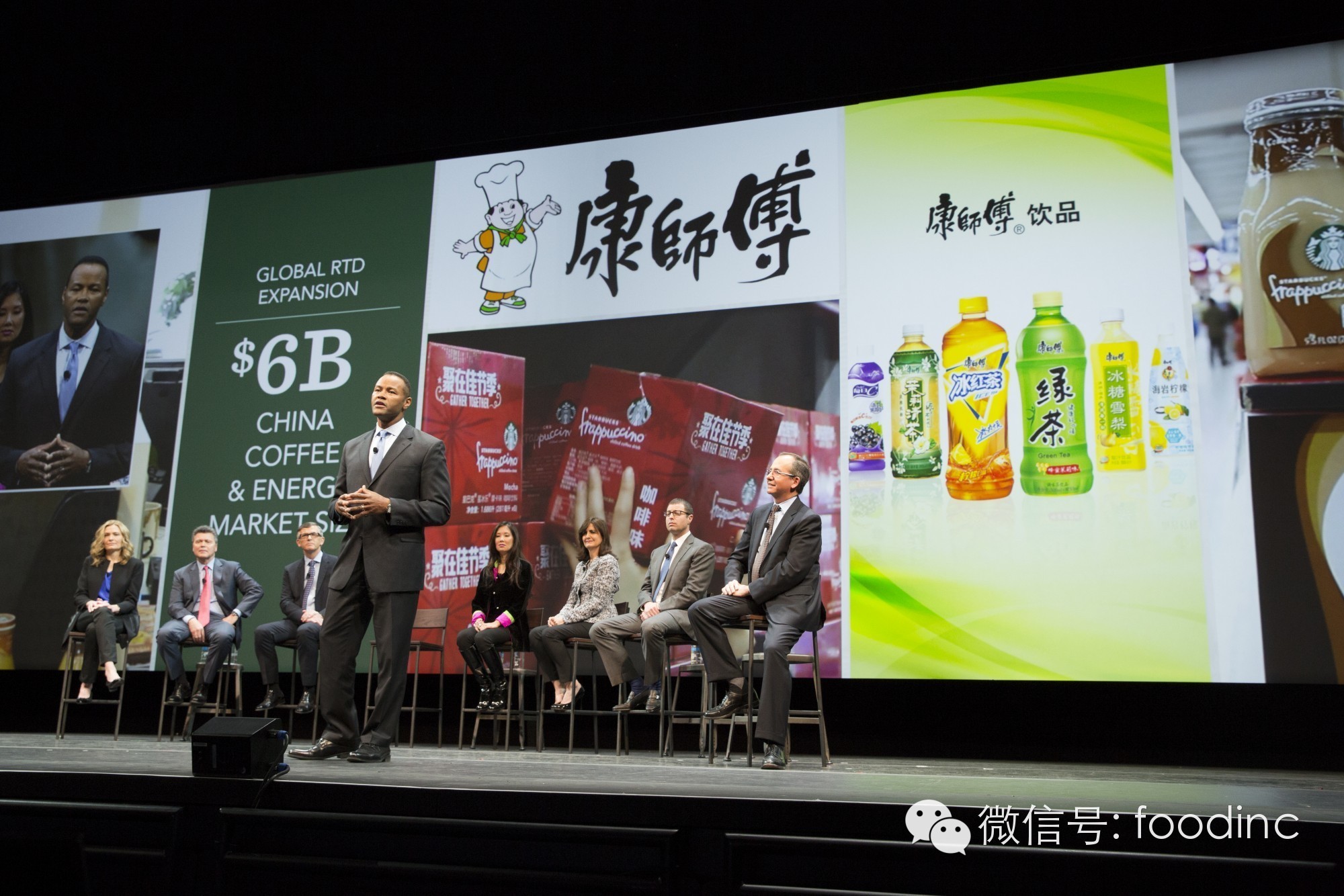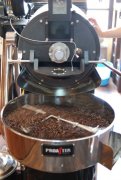Master Kang joined hands with Starbucks to enter the ready-to-drink coffee market.
Multinationals tend to look for a local partner on Chinese mainland because it is the easiest way to target consumers in China's huge market, Reuters reported today. The report also quoted analysts as saying that the cooperation will reduce the cost of Starbucks ready-to-drink coffee and allow Starbucks products to appear in some small Chinese cities, which will create a new group of customers for it.

Early this morning, Beijing time, Starbucks, which is holding its annual shareholders' meeting in Seattle, did not forget to announce that it signed a cooperation agreement with Kang Shifu Holdings Co., Ltd. to expand China's $6 billion ready-to-drink coffee and energy drink market. Subsequently, Master Kang also made the same announcement in the form of an announcement from Hong Kong.
In a circular, the two sides announced today that they have signed a formal cooperation agreement to produce Chinese mainland ready-to-drink drinks and expand distribution channels in the local market. The circular described that the cooperation agreement will rely on the advantages of both sides, bring all Starbucks ready-to-drink product lines into the Chinese market, and strengthen the innovative ability of localization to meet the needs of Chinese customers.
Does China really need ready-to-drink coffee? China's ready-to-drink coffee and energy drinks market is worth $6 billion and is expected to grow by a further 20 per cent over the next three years, according to the two sides citing data from Euromonitor, a market research firm.
Let's take a closer look based on Euromonitor's figures. The size of ready-to-drink coffee in China just exceeded 200m litres in 2012, compared with 254 million litres last year, and is expected to grow to 345 million litres this year and 398 million litres in 2016.
In terms of market share, the top three in 2014 are Nestl é, Suntory and Unification. Their market share in China is 55.50%, 14.10% and 5.90%, respectively. The market also includes competitors such as Kirin, Wangwang, Wa and, of course, Starbucks, but its share is as low as 1.0%.
The shares of the first three giants are all close to 75%, and they are doing well. Snack Dai previously reported that in sharp contrast to the slowdown in the instant coffee category, Nestl é's ready-to-drink coffee achieved double-digit growth in China in 2014, said Bok Kai, CEO of Nestl é. The unification of the annual results just announced the day before yesterday indicated that it would accelerate the investment of resources and intensive cultivation of channels for first-and second-tier focus cities, so as to expand the relative competitive advantage of ready-to-drink coffee.
However, Master Kang and Starbucks still want a piece of the pie. Today, in the above announcement, Starbucks said that this cooperation will promote Starbucks to develop new product categories, while Master Kang said that the ready-to-drink market has a broad space for development in China, and the cooperation with Starbucks will further enrich Master Kang's beverage portfolio in the Chinese market.
The two families have made a clear division of labor. Under the agreement, Chinese mainland will give full play to its expertise and leadership in coffee, responsible for product development and innovation, as well as brand development, while Master Kang will be responsible for the production and sale of Starbucks ready-to-drink beverages in Starbucks.
The announcement did not also disclose how long the agreement will last, but said it plans to produce and market Starbucks bottled Frappuccino drinks with existing and new flavors in China in 2016. After that, more innovative products will be launched. Starbucks ready-to-drink products will be extended to more sales outlets and cities.
According to the company's quarterly report last year, as of that time, the company had 35870 dealers in Chinese mainland, 118635 direct retailers and 452 beverage production lines. As for Chinese mainland, it has more than 1500 stores, and ready-to-drink coffee is now available in more than 6000 stores, supermarkets and convenience stores. Tmall supermarket shows that Frappuccino is currently imported from the United States, a bottle (281ml) "special price" about 15 yuan.
In fact, Chinese mainland launched its own ready-to-drink coffee for the first time in 2007, in partnership with Pepsi, when the former focused on the latter's distribution capabilities. However, about three years later, Pepsi accepted Suntory's offer to help it distribute ready-to-drink coffee. A source told the snack generation at that time that this was tantamount to announcing a "breakup" with Starbucks.
Later, Pepsi Beverage and Master Kang later formed an alliance. Today, Starbucks is back.
Important Notice :
前街咖啡 FrontStreet Coffee has moved to new addredd:
FrontStreet Coffee Address: 315,Donghua East Road,GuangZhou
Tel:020 38364473
- Prev

VOA's report on Chinese Coffee
I also think of what Chris, one of the bosses of first Coffee, said yesterday: the reason why Chinese coffee practitioners have low average status, low salary and low quality is caused by misconceptions in their own country. How can the salary of a barista be high if the cafe is not profitable? It's not like a cafe in Australia selling thousands of cups a day! The baristas there certainly make a lot of money from his words until now.
- Next

Judging the blockage of exhaust pipe of coffee roaster and the method of investigation and cleaning Yang family roaster roasting coffee
How can we detect the occurrence of tube blockage in the roaster? When you find that one or more of the following symptoms appear, it is that obstruction may have occurred! 1. The heating rate deviates from the normal, and the temperature in the middle of the baking begins to rise faster than usual, and the more the tail, the greater the deviation. two。 It tastes sweet, but it tastes like a mist. 3. Lack of clean brightness (brightness)
Related
- The milk tea cup becomes smaller?! Overlord Tea Girl launches a new "Return to Yunnan" series
- Accused of selling counterfeit and high-priced coffee beans! Well-known boutique coffee brand "Oukelao" bowed and apologized!
- How to make espresso dumplings? Can I eat coffee and glutinous rice balls together?
- Save the unformed and stagnant powder cakes in one second! What is the problem with stagnant water in the powder bowl of the espresso machine?
- What does hand-brewed coffee stop mean? Why is it not recommended to make coffee by hand?
- Is it normal to smell like coffee? Why does coffee smell like alcohol? What's wrong with the strong smell of cold extract ice dripping ice brewed coffee?
- How to solve the problem that hand-brewed coffee extraction takes too long? Why is the water flowing so slowly when making coffee?
- The main points of making Australian white coffee, the proportion details, how does Australian white properly foam and blend the flowers?
- Can ice water make cold extract coffee? What is the difference between room temperature water and ice water for making cold coffee?
- What milk is best for making latte and white Dirty coffee? What is the difference between different brands of fresh milk and pure milk for making coffee?

